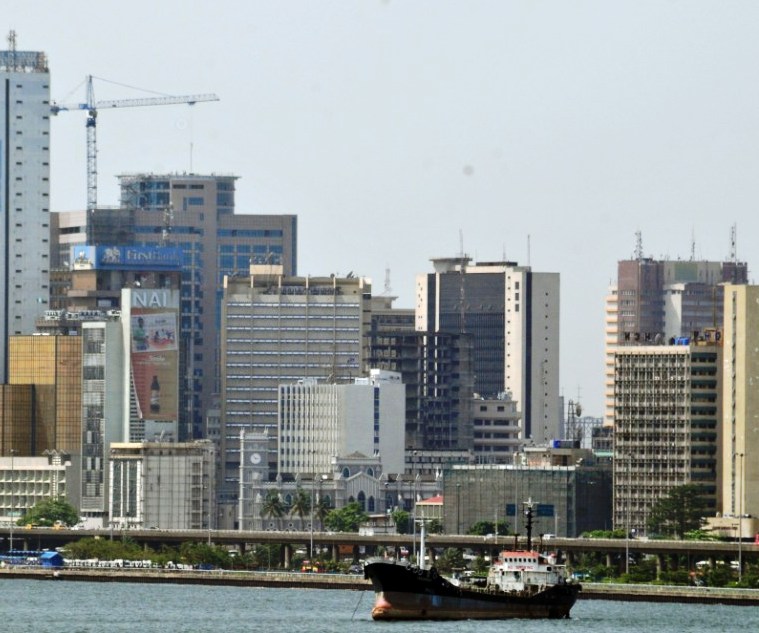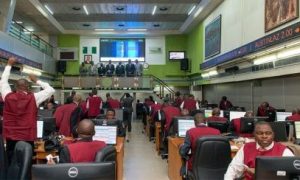To begin with, the NBS announced the selection of 2019 as the new base year for GDP computation, replacing the current base year of 2010, which has been in use since 2014. According to the data bureau, the selection of 2019 as the base year was guided by factors such as overall economic stability, the impact of COVID-19, the availability of administrative data, and the completion of several significant surveys & data collection exercises.
Additionally, the new series has been expanded to capture (1) Digital Economy (2) Activities of Pension Funds Administrators (3) National Health Insurance Scheme (NHIS) (4) Nigerian Social Insurance Trust (NSITF) (5) Activities of Modular Refineries (6) Domestic Households as Employers of Labour (7) Quarrying & Other Mining Activities and (8) Illegal and Hidden Activities.
The new base year and expanded coverage were informed by data from two major censuses and follow-up surveys including the National Business Sample Census (NBSC) & National Establishment Survey 2021, National Agricultural Sample Census (NASC) & National Agricultural Sample Survey 2022, Nigeria Living Standards Survey (NLSS) 2019 & 2023 and investigations into digital economic activities. The exercise was also shaped by supply and demand analysis of 46 industries and 217 products. Based on ongoing efforts, Crop Production and Trade are projected to remain the largest economic activities.
However, Real Estate is anticipated to climb from fifth to third place, replacing Crude Petroleum & Natural Gas, while Telecommunications, Construction, and Food, Beverages & Tobacco are expected to rank fourth, sixth, and seventh, respectively.
Consumer Price Index
For the Consumer Price Index (CPI), the NBS revised the base year for prices to 2024 from 2009, with 2023 adopted for weighting constituent items of the COICOP basket. For the choice of 2024 as the new base year for CPI, the NBS argued that the selection was influenced by significant reforms introduced by the Bola Ahmed Tinubu (BAT) administration, including the removal of the Premium Motor Spirit (PMS) subsidy, the adoption of a unified exchange rate system, and shifts in consumption patterns in the updated 2023 NLSS.
Also, the number of items captured in the basket increased to 960 from 740 and the NBS is set to release new indexes to track farm prices, as well as the energy and services economy activities by mid-February. Additionally, the NBS will enhance its data collection processes by adopting more digital methods.
As a result of these revisions, the CPI weights for Food & Non-Alcoholic Beverages, Alcoholic Beverages, Tobacco & Narcotics, Clothing & Footwear, Housing Utilities and Furnishings, Household Equipment and Maintenance & Recreation, Sport & Culture, decreased to 40.1%, 0.4%, 5.0%, 8.4%, 3.0% and 0.3%, respectively, down from the previous weights of 51.8%, 1.1%, 7.7%, 16.7%, 5.0% and 0.7%. In contrast, the revisions increased the weights for Health (from 3.0% to 6.1%), Transport (from 6.5% to 10.7%),
Information & Communication (from 0.7% to 3.3%), Education Services (from 3.9% to 6.2%), Restaurants & Accommodation Services (from 1.2% to 12.9%), and Personal Care, Social Protection, and Miscellaneous Goods & Services (from 1.7% to 3.3%). Additionally, Insurance & Financial Services was newly included with a 0.5% weight.
Rebasing Overdue
In our view, the rebasing exercise is overdue given the last exercise for GDP and CPI was completed in 2014 and 2009 respectively. Given the transition in the economy induced by demography, global trends and policy, for example, the increasing prominence of digitalisation, young median population age, and growing diaspora links, an economy such as Nigeria may need to revise GDP and CPI bases more frequently than it has taken.
We laud the efforts at expanding surveys and studies to inform the revisions, as well as efforts that may reduce informalisation of the economy. Also, emphasis on the Digital Economy and Mining sector should unlock growth levers provided there is sufficient policy support to drive investment interest in the sectors.
Overall, the new structure would be useful for designing more effective monetary and fiscal policies which could enhance the effectiveness of economic planning. Recall that the 2014 rebasing exercise boosted the Nigerian economy to c.$510.0bn from c.$270.0bn, FX quagmire and productivity challenges have since shrunk the economy to $363.0bn based on ₦646.42/$ average official exchange rate in 2023.
Hence, while the expansive revision to GDP might enhance overall nominal GDP size – as a positive for the BAT-envisioned trillion-dollar economy –policymakers must look beyond statistical effects to drive sustainable growth. Similarly, potential decline in Debt-to-GDP ratio must not derail efforts to enhance fiscal discipline and sustainable debt growth.
On the CPI side, the improvement in services sector coverage (services index) and inclusion of the Insurance & Financial Services sector (0.5% weight) all else equal should deliver a more market-reflective consumer inflation reading going forward. Also, the increase in the number of items captured in the basket will provide legroom to capture activities relevant to consumers.
Furthermore, the decline in Food weighting (although statistically driven) appears less intuitive given the expectations of a higher food budget as per capita income shrinks. The implication of lower food weighting might be positive for inflation reading given that food sectors has historically been a key pressure point for inflation (based on the December 2024 CPI report, food inflation rate cleared at 39.8% y/y, implying a 5.9ppts increase over the corresponding period in 2023).
Elsewhere, we note that the selection of 2024 and 2023 for price and weighting references respectively could have some limitations given the peculiarities of the period from an economic and political perspective – cash crunch, subsidies removal, significant exchange rate deterioration, and other shocks due to early effects of reform policies etc. That said, we also recognise the significance of the period post-subsidy removal (FX and PMS) and the difficulty in selecting other periods (2019 land border closure, 2020 Covid, 2021-2022 economic recovery).
In conclusion, we anticipate significant statistical changes in data upon release of the new GDP and CPI reports based on the aforementioned structural shift. While we expect some positive gains from the revisions, the underlying contexts and drivers for the economy would require sustained and quality economic reform based on coordinated fiscal and monetary efforts.
Ballooning Debt Profile
In other development, the DMO reported that Nigeria’s total public debt stock rose 6.0% q/q to ₦142.3tn in Q3:2024 – the highest Naira amount on record. This was driven by widening budget deficit and negative exchange rate movement impact on the foreign debt component.
Domestically, Nigeria’s debt stock rose 3.1% (9M:2024 -up 24.2%) to print at ₦73.4tn, representing a 51.6% share of the total debt stock and this aligns with the 70.0% share cap for domestic debt as stipulated in the DMO’s sustainable debt mix policy. Meanwhile, the external debt component rose sharply by 9.2% q/q (9M:2024 – up 80.2%) to ₦68.9tn – reflecting the further depreciation in the Naira rate (down 11.9% to average ₦1,579.22/$1.00 in the quarter).
On the backdrop of rising debt stock, Nigeria spent ₦3.6tn on debt servicing in Q3:2024, a 1.7% increase from the Q2 print of ₦3.5tn. External debt servicing in Q3 amounted to $1.3bn which translates to ₦2.1tn at exchange rate of ₦1,601.03/$1.00, compared to $1.1bn (₦1.7tn) in Q2 at a rate of N1,470.19/$1.00 – up 29.7% and 19.4% in naira and dollar terms, respectively.
However, domestic debt servicing fell 23.1% to ₦1.4tn in Q3 from ₦1.9tn in Q2. As of 9M in 2024, FG had spent ₦9.6tn on debt servicing, representing 154.7% and 75.2% outrun on the ₦6.2tn and ₦12.7tn budgeted debt servicing and pro-rata projected revenue for the period (9M: 2024), respectively. Based on the estimated Naira equivalence of the $2.2bn Eurobond and other domestic and bilateral debt instruments tapped by the FG in Q4, we estimate national debt stock to have reached ₦150.0tn as of 2024 year-end – implying a ₦6.3tn outrun to our previous estimate.
Given weak optimism around FG’s projected revenue of ₦34.8tn for 2025 (owing to overly optimistic assumptions), we estimate that the actual deficit for the year could surpass the ₦13.4tn budgeted by as much as 40.0% in a base case. By implication, this estimate implies that total debt profile could race towards ₦170.0tn by 2025 year end.
While the improvement in oil production in Q4:2024 (Avg. daily volume: 1.43mbpd vs Q3: 1.33mbpd) is a welcoming development, it remains significantly short of the baseline output (2.0mbpd and above) that can meaningfully strengthen fiscal war chest. Besides, efforts to revive export potential of key sectors such as agriculture and manufacturing are yet to produce meaningful impact.
This reality further strengthens the cautious optimism on revenue projection for 2025. Against this backdrop, we advise that the Nigerian government should rethink their strategy on fiscal sustainability. Attention should be channeled towards low hanging fruits such as optimising oil output by curbing theft, cutting down on avoidable fiscal excesses (by taking a cue from Argentina), improving the business environment to drive tax revenue growth, and seeking for debt cancellation or restructuring from bilateral and multilateral organisation to free up resources for growth stimulating capital projects (43.9% of 2025 budget is to be channeled to debt servicing alone).
Afrinvest



























